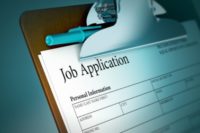It ain’t all rosy
But other economic data paint a very different picture.
Growth of income and spending in the economy is weak. Americans’ inflation-adjusted, after-tax income has barely risen over the past six months. Overall consumer spending rose a microscopic 0.6% between July 2011 and January 2012. Forecasters anticipate gross domestic product (GDP) will likely grow at a 2% annual rate in the first quarter, a full percentage point below last quarter’s growth. The rising price of oil and gasoline is increasing inflation and depressing growth. Even if oil prices stop going up, the increase to date will shave 0.2 percentage points off first quarter growth. And despite all the good news about the unemployment rate dropping, it is still very high at 8.3%.
Time will tell
So which news is most telling about the state of the American economy? It’s too soon to tell, according to The Wall Street Journal.
Inspecting economic indicators is a little like flying blind. Peering through the front window, the Journal’s new survey finds forecasters predicting 2.5% growth in the second quarter and slightly faster growth for the rest of the year — better, but not good enough to push unemployment down quickly. The Fed said this week it sees “moderate” growth ahead, which in Fedspeak is a smidgen more upbeat than the “modest” growth it previously anticipated.
But there are storm clouds ahead. The risk that Europe will throw the global economy off course has diminished, fortunately, but recession in Europe and slow growth in the rest of the world are going to hurt U.S. exports.
At the same time, cuts in spending by the U.S. federal government and by state and local governments are already a drag on economic growth, and tax increases and spending cuts loom at year-end unless Congress and the president find a face-saving or deficit-reducing compromise before then.
One thing to keep in mind, however, is that although the signs of strength are encouraging, there are far too many warning signs that the economy’s burst of speed is going to squander. The economy can’t be simultaneously improving and getting worse, so for now, only time will tell.



